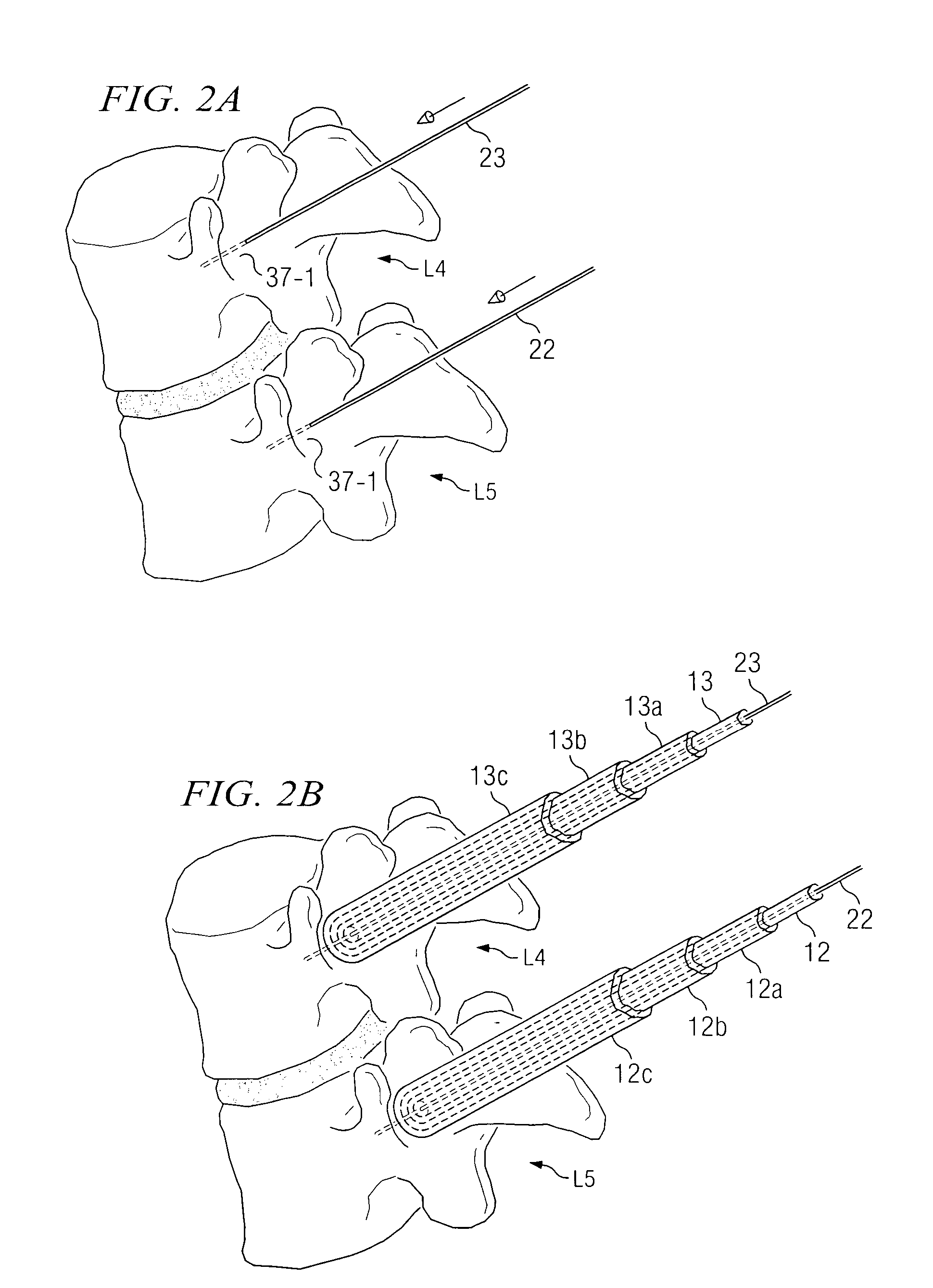System and method for stabilizing of internal structures
a stabilizing system and internal structure technology, applied in the field of bony structure stabilizing systems, can solve the problems of reducing the height of the disc space, affecting the placement of the percutaneously placed bone, and affecting the stability of the internal structure, so as to reduce the difficulty of percutaneous placemen
- Summary
- Abstract
- Description
- Claims
- Application Information
AI Technical Summary
Benefits of technology
Problems solved by technology
Method used
Image
Examples
Embodiment Construction
[0034] Turning now to FIG. 1, there is shown a sketch of human spine 10 showing a pair of tubes, or cannulas 41 and 42 extending through skin 101 into vertebrae L5 and L4. Cannula 41 is positioned over the pedicle of vertebrae L5 (as will be discussed), and cannula 42 is positioned over the pedicle of vertebrae L4. This procedure is being illustrated with respect to vertebrae L4 and L5 but could be performed with respect to any vertebrae or with respect to any bony portions of the body (human or animal) where a brace is to be placed between two points. The distance D is variable as desired. The sketch of FIG. 1, as are the sketches shown in other figures, are not to scale and are shown for illustration purposes with angles selected for clarity of explanation and not necessarily selected to be anatomically correct.
[0035] The procedure to insert the brace between vertebrae L5 and L4 is as follows: The surgeon identifies the desired vertebral levels and pedicle positions via standard ...
PUM
 Login to View More
Login to View More Abstract
Description
Claims
Application Information
 Login to View More
Login to View More - R&D
- Intellectual Property
- Life Sciences
- Materials
- Tech Scout
- Unparalleled Data Quality
- Higher Quality Content
- 60% Fewer Hallucinations
Browse by: Latest US Patents, China's latest patents, Technical Efficacy Thesaurus, Application Domain, Technology Topic, Popular Technical Reports.
© 2025 PatSnap. All rights reserved.Legal|Privacy policy|Modern Slavery Act Transparency Statement|Sitemap|About US| Contact US: help@patsnap.com



